

Small Craft Advisor

Boat Review: CLC Skerry
This 15-footer is fun, functional, and easy to build.
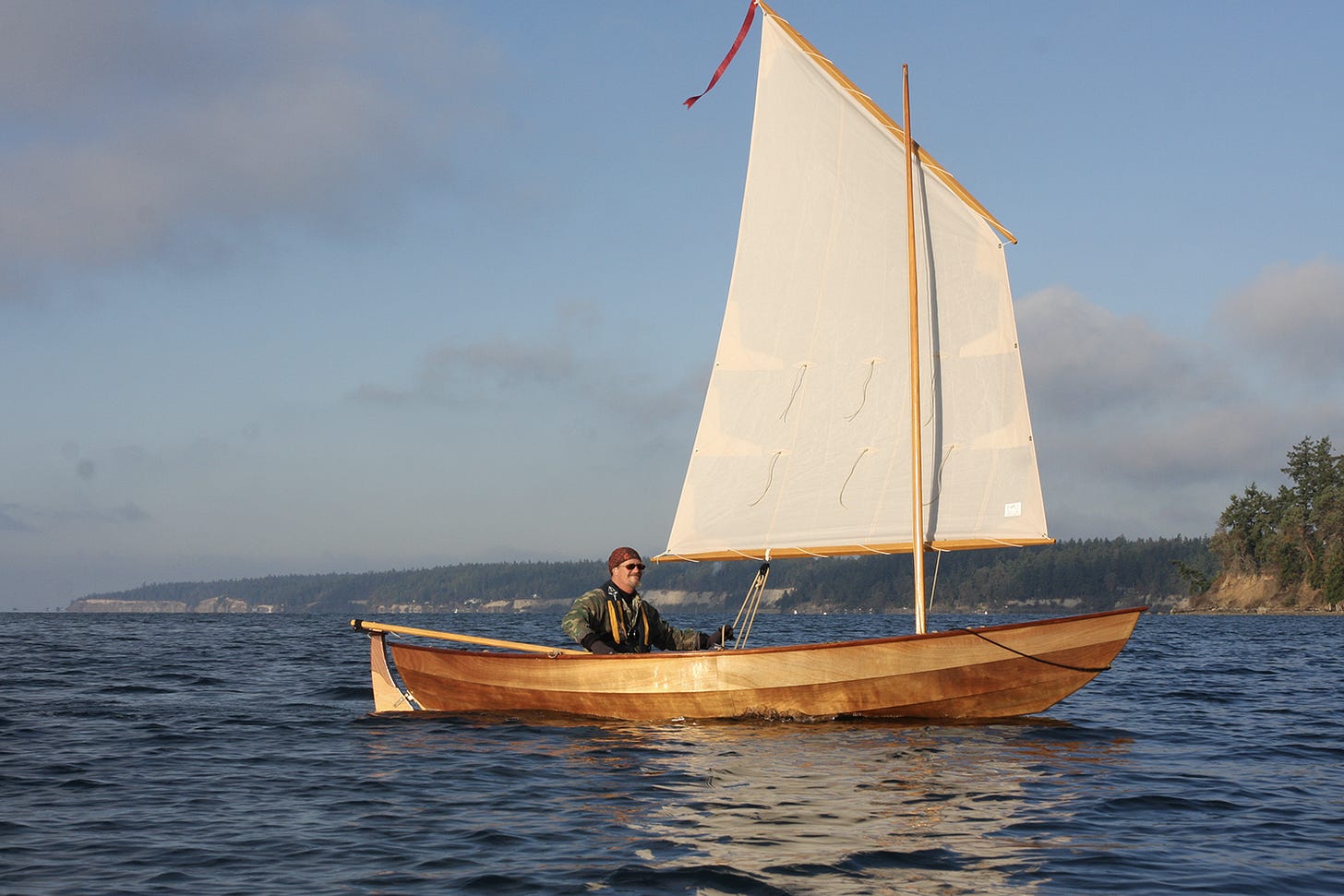
Small, simple-to-build boat designs—the type most likely to be tackled by a beginner—rarely end up offering the on-the-water performance and virtues necessary to actually satisfy their builders. While there’s potential for these rudimentary boats to be a gateway to more building and sailing, many don’t serve any realistic waterborne need and end up being used once or twice and unceremoniously decommissioned. The “family skiffs,” once so full of promise, end up as garden art, full of sand.
The trick then—and it’s much harder than it looks—is to design a small, simple boat that offers some of the advantages, performance, and versatility of larger, more complex designs. The goal is a “big” little boat. And if it can somehow be a handsome-looking craft, so much the better.
One of the rare boats we’ve seen that appears to tick these boxes is the Skerry , designed by John C. Harris at Chesapeake Light Craft. Sold both as plans and in kit form, the Skerry has proven immensely popular since its release in 2002.
“About 600 have been built from kits,” Harris says. “The number built from plans is harder to pin down, but there must be a bunch. These aren’t kayak-kit numbers, but for a small sailboat that’s not a white fiberglass sloop, it’s an impressive tally.”
What first caught our attention was her pleasant appearance which, while not reminiscent of a particular traditional boat, seemed somehow rooted to history. Harris says Skerry combines elements of traditional working craft of the British Isles and Scandinavia, with a little bit of American Swampscott Dory thrown in.
“The starting point for the design was in fact a peapod,” Harris says, “and the early prototypes had more burdensome lines. But I realized at once that the essential character of a true peapod is, above all, its enormous weight. Which of course isn’t consonant with a mail-order boat kit.” Knowing a stitch-and-glue Okoume plywood boat built to these lines was going to be light, Harris went the opposite direction, looking more closely at Scandinavian small craft for inspiration.
As for the final product, the designer is delighted. “I was startled by how well the boat handled both as a sailboat and as a rowboat.” Harris says. “It’s tricky and rare to combine those qualities.” He’s quick to acknowledge, though, that none of the individual design elements were particularly original. “I wish I could credit my genius as a boat designer,” he says, “but all I really did was collect a grab-bag of features long known to work well: a narrow waterline to make her easily-driven, flaring sharply to a broad beam up at the rail for solid secondary stability. The boat can be driven fast without much sail area, and you rarely hear of these being capsized. The flare makes her dry in chop. It’s a very forgiving sailboat but fast enough to keep the dinghy-racers happy. And of course you can row it all day.”
We asked Harris if there was anything he’d do differently or anything that came to surprise him about Skerry.
“Among the critiques of the boat is that it has a rather spare fit-out. The interior, for example, is simple bordering on austere. Serious builders who look forward to laminating frames, fitting thwart knees and assembling spacered inwales are apt to be disappointed. But the modest parts-count was a deliberate design choice, and in fact probably explains the boat’s success.”
The current base Skerry kit—which includes computer-cut hull parts in Okoume, Spanish cedar rubrails, Sapele breast hooks, the daggerboard trunk assembly, an epoxy kit, fiberglass for the hull, one pair of bronze oarlocks and sockets, and a spiral-bound assembly manual—sells for $1,425. A sailing kit is an additional $1,269.
“More importantly,” Harris says, “the Skerry is quick and easy to build, so amateurs are likely to make it all the way through to completion.” And whether it’s the French fleet of 50 Skerries gathering for their own messabouts or Skerries entering the Watertribe races, these boats are getting out on the water for serious use. All the more impressive when you consider that at 95 pounds, Skerry, as John Harris points out, weighs less than some German Shepherds.
We were pleased to get a chance to row, sail and review a well-built Skerry with owner Jonathan Patton.
PERFORMANCE:
“Moves nicely even in light air.” Jimmy Vitale , Victory
“The Skerry is a fun boat to sail. It gets me where I want to go. That said, it does not point into the wind well.... it goes back to that sprit sail. I suspect the other rigs offered would perform better.” Steven Roberts
“Fast enough! It reaches hull speed, then maxes out. Fine for my needs, as a recreational cruiser. Points well, not as well as a main-and-jib rig, but does well. It sails like a large boat. To tack, you have to maintain forward speed. The rudder is totally effective, but not to ‘horse’ the boat around if you run out of speed tacking, like in a Laser or small dinghy.” Dave Barton, 2014 Tritone Substitution
“It rows easily and, being 72 years old, I have no problem maintaining a steady pace. Under sail the boat moves in very light air.” Henry Wing
We met Jonathan here in Washington, at Marrowstone Island’s Mystery Bay, where he’d already offloaded his Skerry and set it down on a portable dolly-cart trailer. He wanted us to have the “complete experience,” so we walked the boat down the ramp ourselves, launched it, removed the strapped-on dolly trailer, and pulled the boat over to the adjacent beach. Simple.
Next we grabbed the oars, slid the oarlocks into the center sockets (Skerry is designed with two rowing stations) and headed toward open water. The svelte Skerry slipped along effortlessly. Movement was so smooth and it carried so well we decided she’s a boat you might actually choose to take for a row, as opposed to merely acting as a secondary propulsion option. We weren’t surprised to discover later that owners laud her rowing prowess—with a few mentioning even having performed well in rowing races.
After returning to shore it was time to rig Skerry for sailing. We stabbed the lightweight mast into the mast partners and attached and hoisted the cream-colored lugsail Jonathan had ordered from Duckworks. There’s a single halyard to raise sail, a downhaul, and one sheet—this simple and effective rig is forgiving both in terms of setup and handling under sail.
Pushing away from shore with our foot—you can do this sort of thing on a small boat—we sheeted in and sailed from the shallow channel until it was deep enough to drop the daggerboard.
Keep reading with a 7-day free trial
Subscribe to Small Craft Advisor to keep reading this post and get 7 days of free access to the full post archives.
- Row boat plans
- Sailboat plans
- Power boat plans
Skerry by Chesapeake Light Craft
15-foot double-ender - fast rowing and sailing dinghy.
| Length overall | ||
|---|---|---|
| Beam | ||
| Draft | ||
| Draft (cb up) | ||
| Weight | ||
| Capacity | ||
| Sail area | ||
| Hull construction | Stich-n-glue | |
URL: http://www.clcboats.com/shop/boats/boat-plans/sailboat-plans/skerry-rowing-sailing-dinghy-kit.html
Description:
Easy to build, easy to row, and easy to sail – the Skerry is a truly versatile boat, and a pretty one, too.
The Skerry design combines elements of traditional working craft of the British Isles and Scandinavia, with a little bit of American Swampscott Dory thrown in. The blend of historical antecedents yields excellent performance under sail or oar, along with good looks and ease of construction in plywood. This John C. Harris design fuses excellent rowing and sailing qualities into one attractive craft. Sail when there's wind, row when there's not. You'll cover the miles either way.
It’s an ideal first boatbuilding project, and a good boat in which to learn to sail or row. The Skerry will take you for a relaxing afternoon sail, or it has the capacity and performance to go "beachcruising" - sailing or rowing by day and pulling up on a secluded beach each evening to camp. The Skerry ’s feather-light weight and shallow draft mean that you can poke into quiet waters, pull the boat over a sandbar, and explore that hidden cove.
"This Skerry is a beautiful boat... There is not an ugly line on this boat. The sheer is beautiful and accented by the lines of the chines. The chines add interest and eye candy to an already appealing boat." - Sailing, June 2003
The flaring sides make the Skerry stable and dry under sail. The stock sprit rig was chosen because it's easy to set up and handle, powerful for its size, and stows inside the hull for transport. Windward performance is excellent. The boom is out of the way of the crew—no bonked heads—and the boat can be rowed with the sail up. This is such an important and practical feature for small boat handling that it’s bizarre not to find it in more smallcraft. Under oars, the Skerry has a long, easy glide and excellent tracking. Two rowing positions permit the Skerry to be rowed with one, two, or three adults on board.
Ultralight weight - about a hundred pounds - also means the Skerry is easy to handle ashore. Given a heavier car, good quality roof racks, and two average adults, the Skerry can be cartopped with ease. Or, if you use the boat by yourself most of the time, the lightest, simplest boat trailer or dolly will work.
The Skerry is a plywood-epoxy composite boat, assembled using Chesapeake Light Craft’s exclusive LapStitch technique. The sides are 6mm Okoume, while the bottom is 9mm, sheathed with fiberglass for those hard beach landings. The interior includes 9mm okoume frames and sealed air tanks at the bow and stern for buoyancy. The matrix of high-quality plywood and marine epoxy allows great strength and a glossy finish. To build a Skerry , all you need is a pair of sawhorses and a warm place for a shop. No mold, no lofting, and no odd tools beyond a couple of sharp planes, a drill, a bucket of C-clamps, and a sander.
The daggerboard trunk is included in, and integral to, the "base model" rowing kit. Thus all builders can add the sailing rig from the start, or at some point in the future.
An option that is gaining in popularity is a larger gunter-sloop rig. The rig is that of the well-tested Passagemaker dinghy, comprising a 58 square foot mainsail and a 19 square foot jib. This will be a fast and weatherly option and is intended for sailors for whom speed is of paramount importance. The mast is aluminum, supported by three stainless steel shrouds, while the boom and yard are wooden. The sloop rig can be added at any time or retrofitted to an existing Skerry . A balanced lug rig is also popular and works with the sprit's stock mast step.
The Skerry measures 15'0" overall and 4'6" wide. Draft is 5", or with the daggerboard down, 30". The rudder kicks up easily for beach landings and has the traditional Scandinavian push-pull control rather than the more typical tiller. Everyone who has ever spent time in a Skerry has lauded the push-pull tiller as it opens up the interior for flexible seating, whereas a traditional tiller severely limits the seating positions.
Boats about same size as Skerry
| / |
| / |
Questions? Suggestions? Contact us at: [email protected]
Promo Article
DERRY – 15′ CLC Skerry
A project for the pandemic
D uring the COVID pandemic, Melbourne, Australia’s second largest city, was second to none when it came to lockdowns. From March 2020 to October 2021, the city endured six lockdowns for a total of 262 days, more days by far than any other city on Earth. In the midst of the pandemic, Gary Hardy realized the looming threat of another long spell of being homebound could be put to good use as a compelling argument to build another boat.
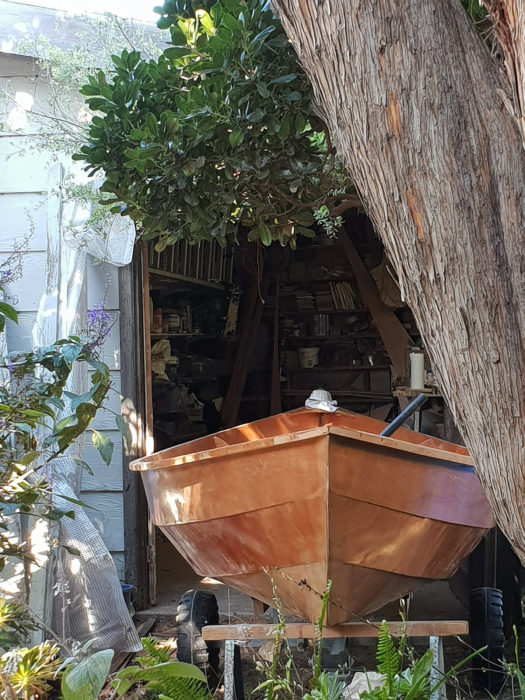
He had been retired for a few years and could do with his time pretty much as he wished, and what he wished to do was build another boat. That required a negotiation with his wife, Anne. The 17′ plywood kayak he had built before retiring had taken over their home’s lounge room, and when Gary finished the project he had to take out a window to move the kayak out of the house. Anne was reluctant to have another boat built on a diagonal across a room meant for relaxing, and the two agreed on something much smaller: a cradle boat. Gary bought the plans for Chesapeake Light Craft’s 7′ 9″ Eastport pram and scaled it down to bunk a grandchild. Christened SEA PUP, it has remained unused as no grandchildren are yet in the works.
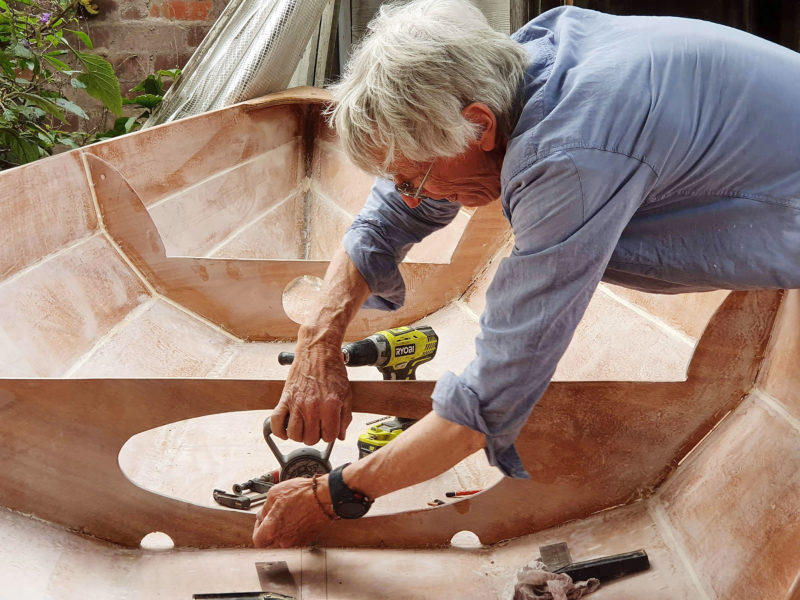
When Gary foresaw another lockdown coming, he once again entered negotiations with Anne about building yet another boat. This time it was Chesapeake Light Craft’s Skerry, a 15′ double-ender for oar and sail. “I argued that building a boat was an important mental health measure.” To up the ante even further he put the Skerry kit on his pointedly specific Christmas and December birthday wish lists. He also placed the order.
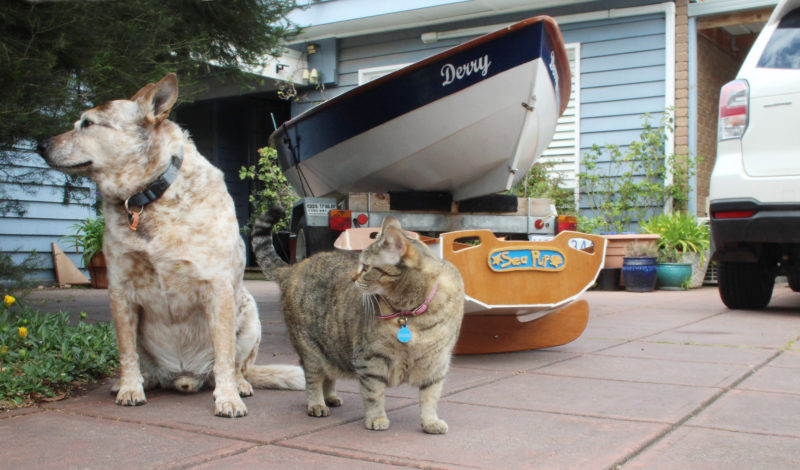
Gary didn’t get to build the Skerry in the lounge. The project was relegated to the shed, and he had to sell his Mirror dinghy to make room. It was a tight fit. “Somehow, either my shed was smaller or the Skerry bigger than I anticipated, but I managed.” The lockdown he had seen coming did indeed happen, and Melburnians once again spent most of their time at home. For Gary, “building during lockdown was a blessing and kept me sane and happy.” Building a boat in cramped quarters required some gymnastics, adding to the mental health measures some physical benefits: “Squeezing round the edges to build that boat was extremely good for stretching and flexibility.” After the hull was finished, he put the Skerry on a dolly so he could move it out of the shed during fair weather and work on it in the garden.
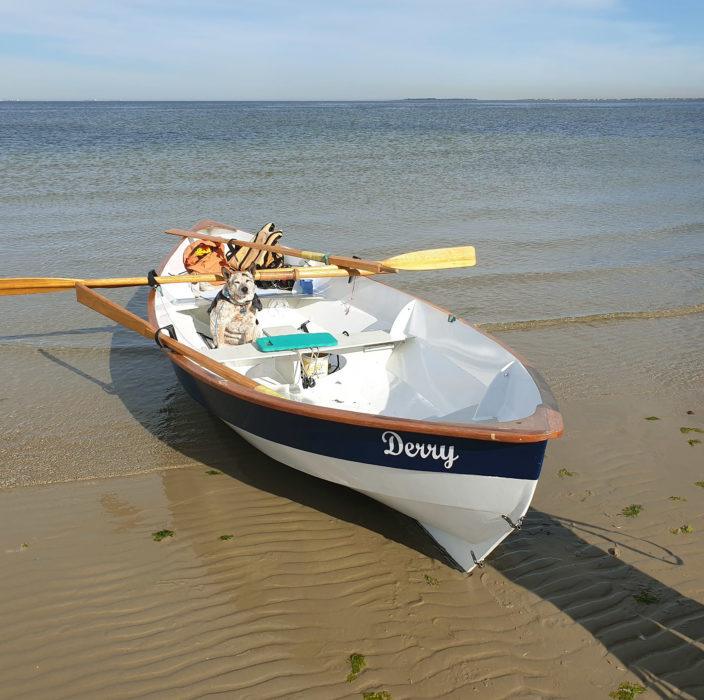
Gary christened the finished boat DERRY, his mother’s maiden name. It was what his father called his mother since their courtship, when he gave her a book he had inscribed “for Derry is my darling.”
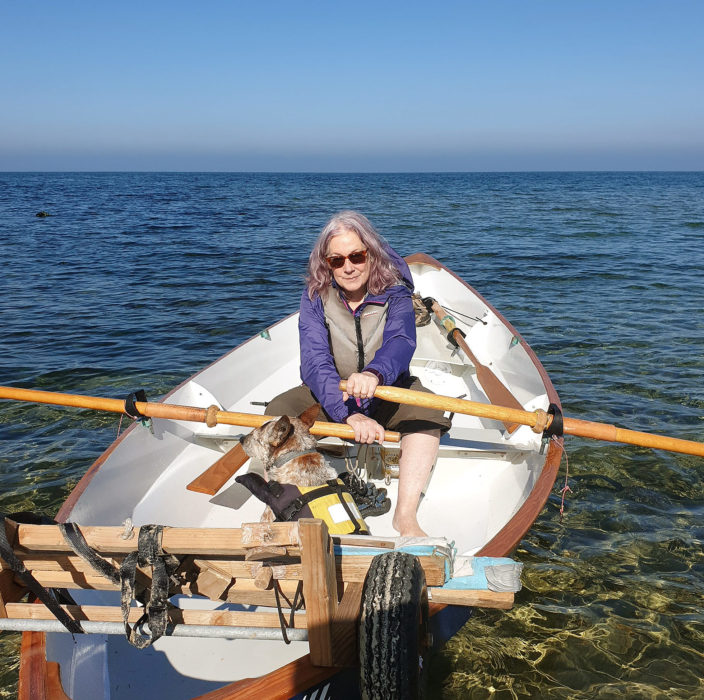
G ary has been pleased with the Skerry’s performance: “a real delight to sail and row.” And Anne “loves it, much more than any of the boats I have owned in the past.” Gary added side benches in the bow to provide a comfortable spot for Anne to be while sailing. With the boat’s two rowing stations they can also row together; “a nice companionable activity.”
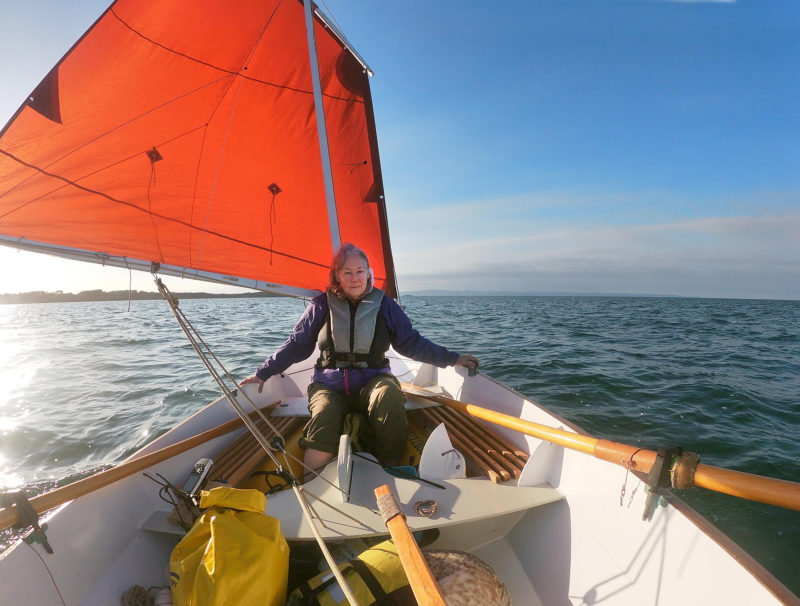
Ozzie, the couple’s two-year-old Australian Cattle Dog, is Gary’s other sailing companion. “A key characteristic of this breed is an extraordinary level of loyalty. Ozzie is profoundly miserable if I go out sailing without him. Australian Cattle Dogs are also extremely good at communicating how they are feeling. He has an unerring way of letting me know he will go with whatever we are doing because he is a good, loyal dog, but he may be very, very unhappy about it.” While getting doused with spray while DERRY was beating to windward, Ozzie glared at Gary through eyes narrowed with reproach.
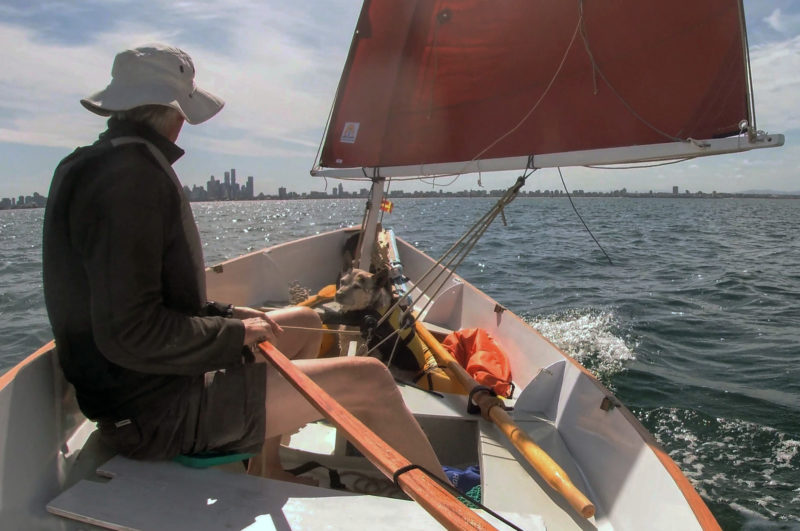
Gary then devised a dodger to shelter Ozzie. After making a prototype from a poly tarp, he sewed up a canvas version to be supported by a curved PVC pipe anchored in the forward oarlock sockets. “Ozzie certainly approves of the enhancement, and I have found it is very cozy to snug down behind it for a morning coffee. If I can persuade Ozzie to move over.”
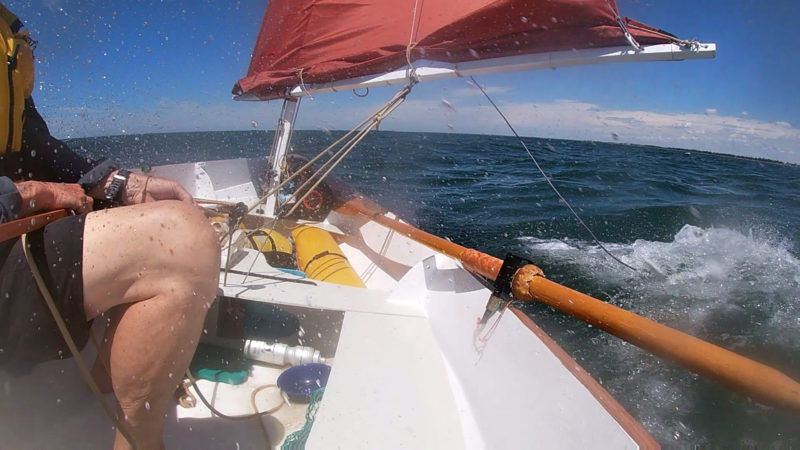
Gary made several other additions to the Skerry, which were inspired by articles in Small Boats: a Paddook , a Norwegian tiller keeper , a Spinnaker for rowers , cord-wrapped oarlocks for the sculling station, one of those nifty mainsheet cam-cleat things that fit into the oarlock socket, and even a bed frame made from Ikea bed slats .
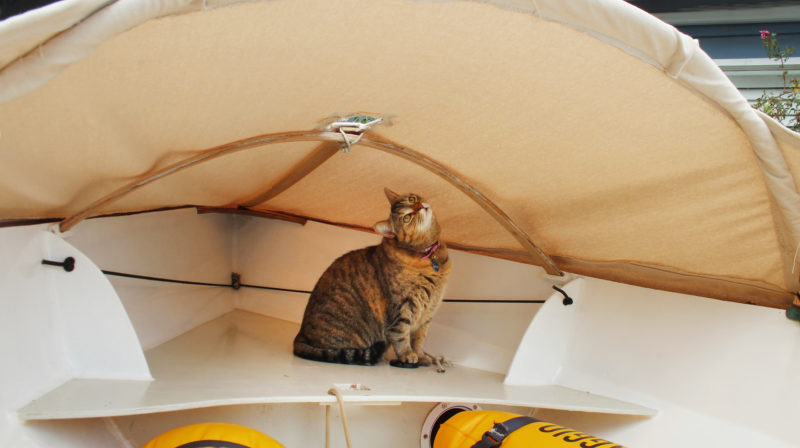
Gary has entered DERRY for next February’s Tawe Nunnagah 2023 , a raid that runs over nine days and 140 nautical miles up the east coast of Tasmania—what he describes as “a fantastic but wild stretch of water.” If all goes well, he’ll finish in Hobart in time for the Hobart Wooden Boat Festival.
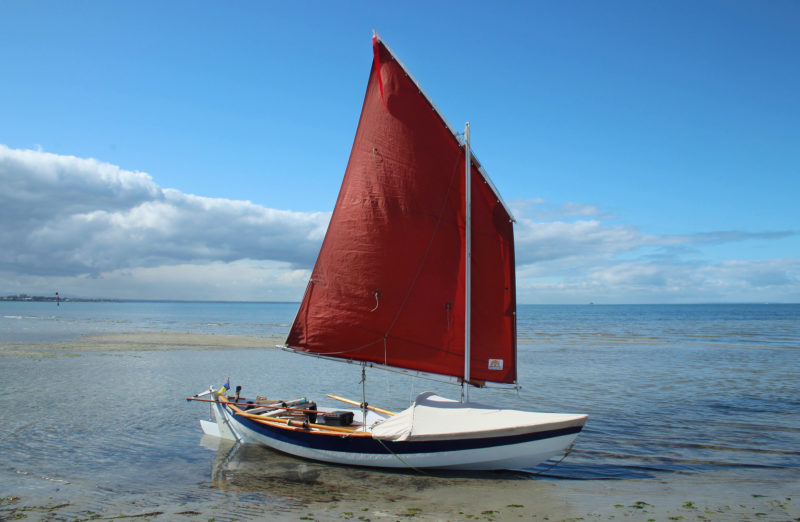
Do you have a boat with an interesting story? Please email us. We’d like to hear about it and share it with other Small Boats Magazine readers.
Share this article

Limited Time Offer
Get unlimited access to Small Boats Nation
$2.50 / month $1 / month.
Billed as $29.95 $12 / year for the first year
Subscribe Now
After your first year, you will auto-renew at the regular rate of $29.95/year. You may cancel at any time.
Join The Conversation
We welcome your comments about this article. If you’d like to include a photo or a video with your comment, please email the file or link.
Leave a Reply Cancel reply
Your email address will not be published. Required fields are marked *
Stay On Course
More From This Issue
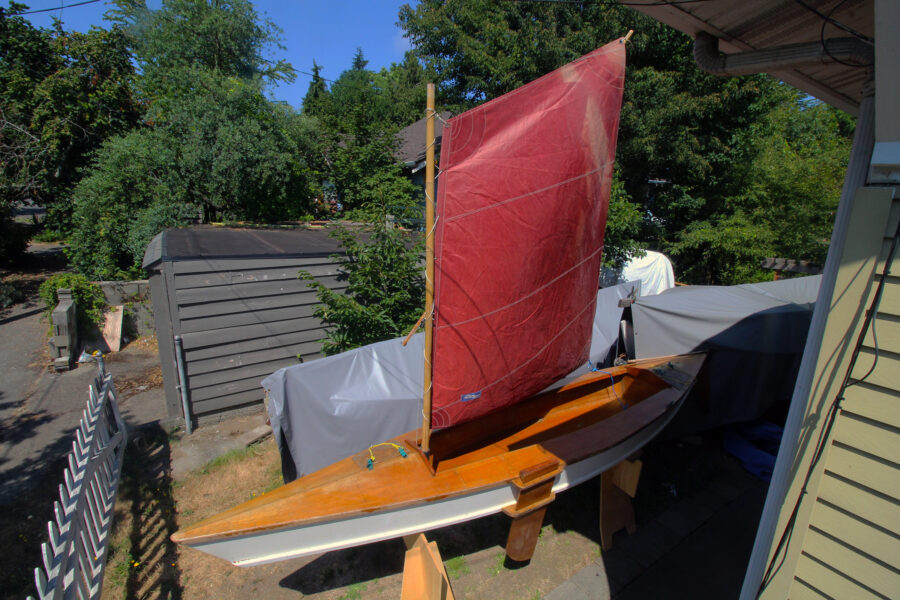
From The Editor
Hand-Me-Down
I put the pirogue on sawhorses where I could better see what work needed to be done. The plywood brackets that would hold the leeboard were delaminating and I could…
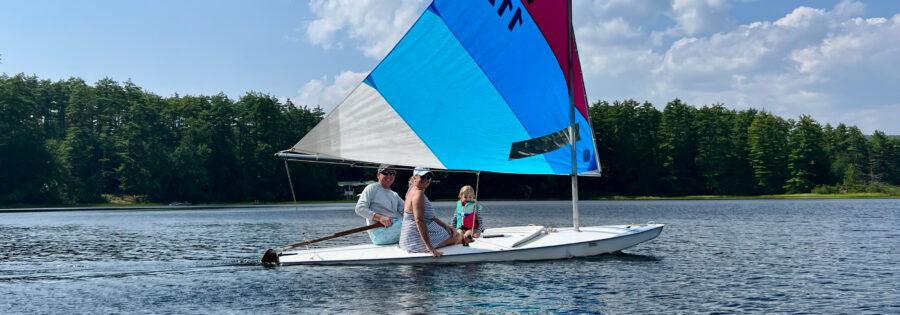
Boat Profile
The Sunfish, a direct descendant of the 1945 Sailfish, was the creation of ALCORT Sailboats, founded by Alex Bryan and Cortlandt Heniger. A hollow-bodied wooden “sit-on” sailboat, the Sailfish was…
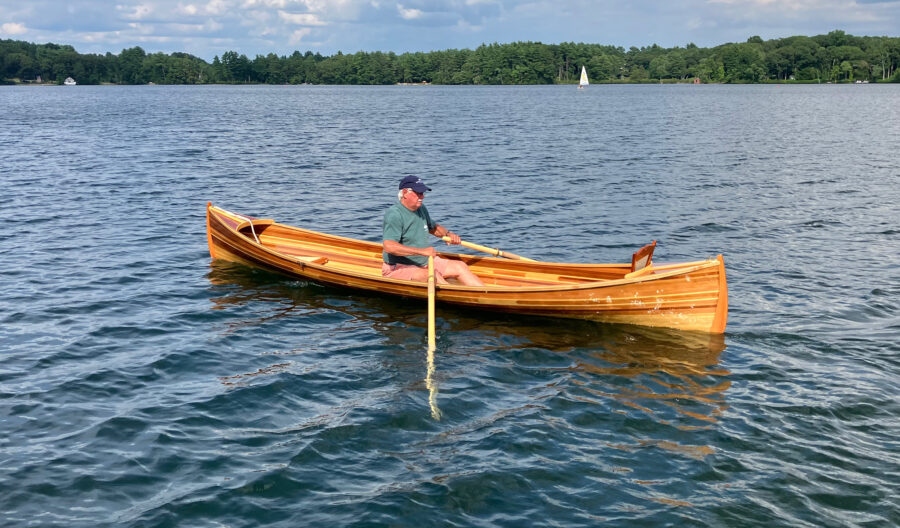
Adirondack Guideboat
After building boats from plans, where I had to find sources for all the materials, I concluded that building from a kit (especially one from Newfound Woodworks) is the way…
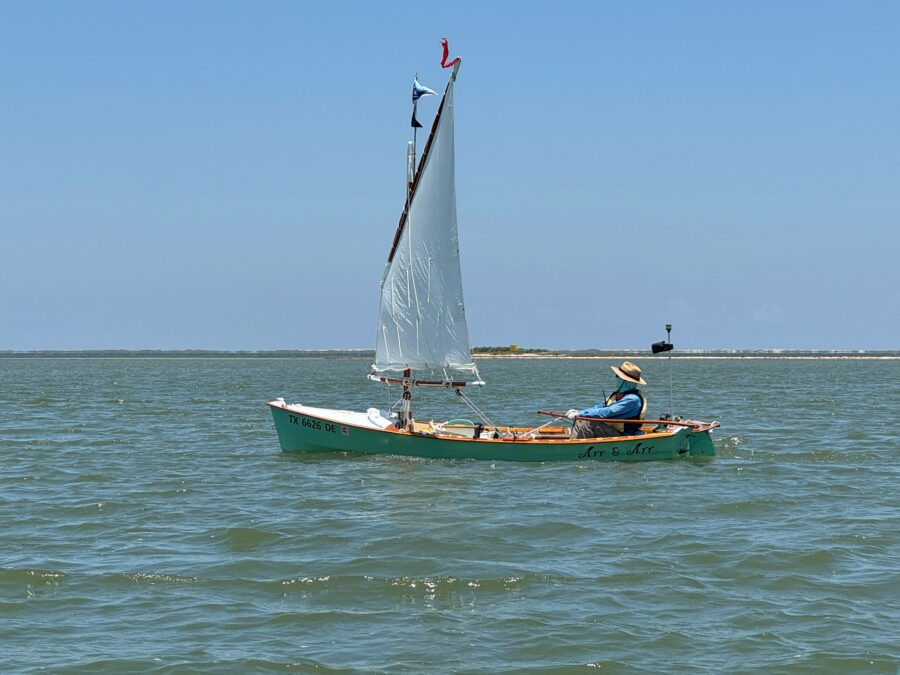
Return to the Texas 200
When I cleared Port Mansfield, the wind in Red Fish Bay remained light but became steady from astern. A scattering of cumulus clouds hung just above the horizon. It was…
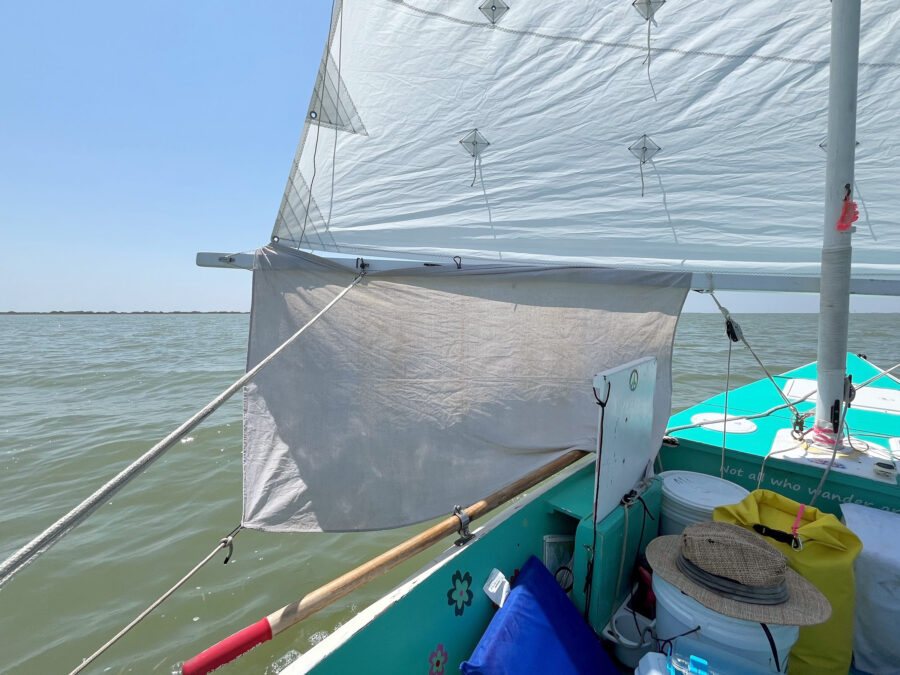
Water-Sails for Small Boats
My experience with water-sails started when I was on a multi-day camp-cruising trip about five years ago, and I had a long downwind leg to sail one morning in very…
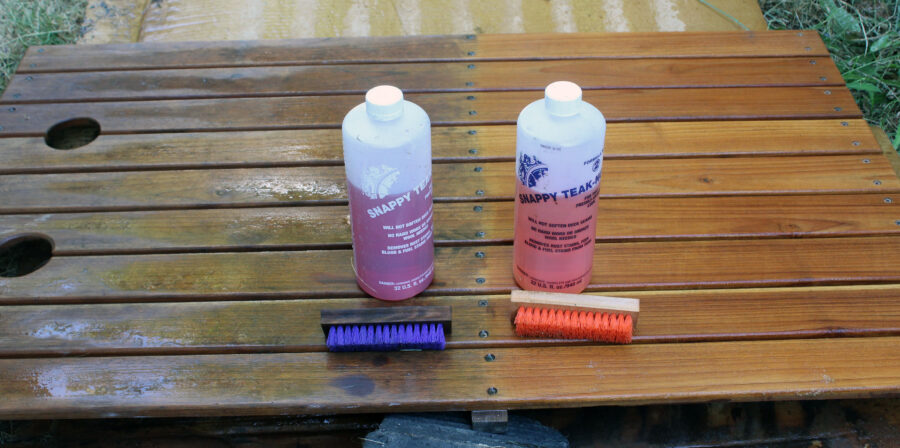
Product Reviews
I had seen how well Snappy Boat Care’s treatment had brought the brilliant color back to a weathered teak outdoor table and bought the two-part kit of Teak-Nu to remove…
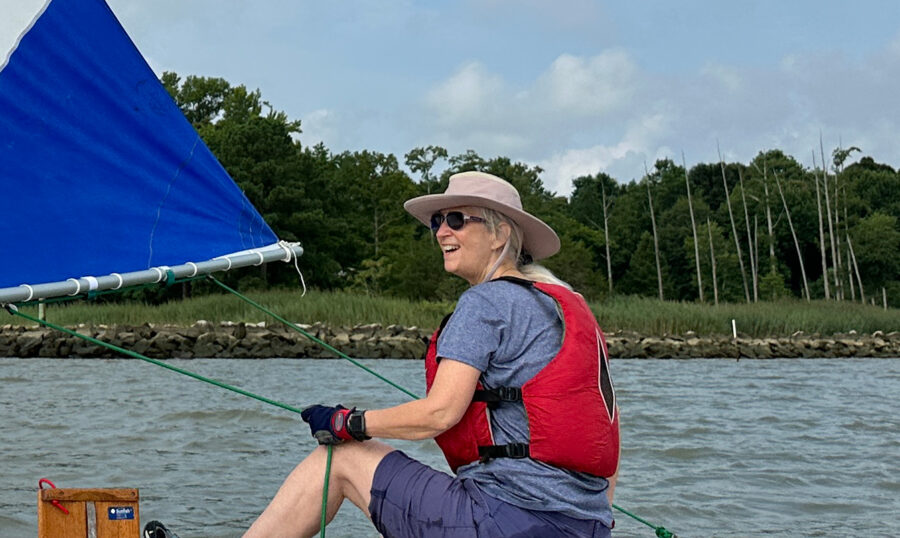
Airflo Sun Hat
The Tilley company was founded by Alex Tilley in 1980. Tilley was a sailor who couldn’t find a hat to his liking, so he designed one to protect against sun…
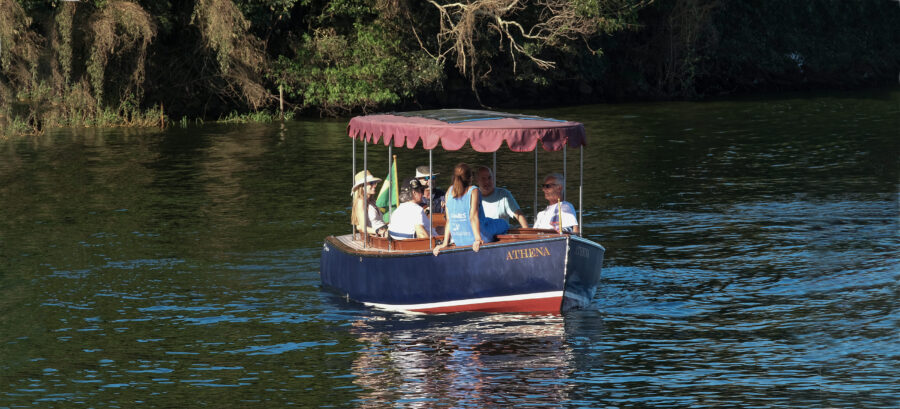
Reader Built Boats
Home-Built Elegance
He had in his possession a Vetus EP2200 electric motor, and it sparked the idea of building a customized harbor launch. He collaborated with Walt Simmons and together they altered…
More Promo Article
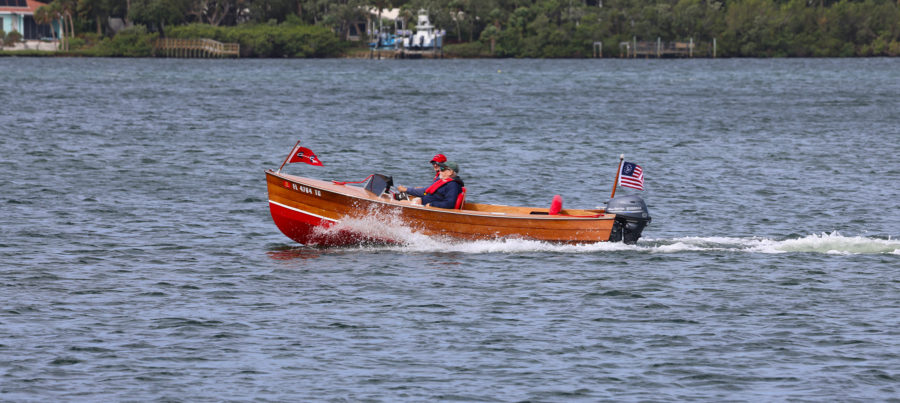
CLC Rhode Runner
Shop Chesapeake Light Craft Rhode Runner Kits wanted to build an outboard boat that would be fun to use in Florida, something eye-catching and different. I had always been drawn...
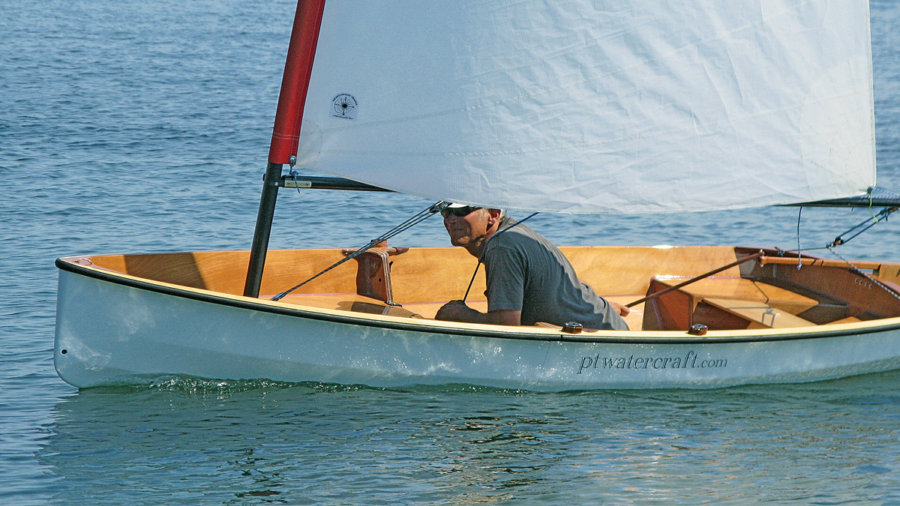
CLC Nesting Dinghy
By extensive ocean cruising, Russell Brown came to know what he valued in a nesting dinghy, and his PT 11, which weighs just 85 lbs, balances conflicting purposes of sailing,…

A Portage To Far In Our Northeaster Dory
Shop Chesapeake Light Craft Northeaster Dory Kits ur plan was simple: on Friday, April 30, 2022, Delaney and I would embark from Brooklin to make a 26-mile circumnavigation of the...
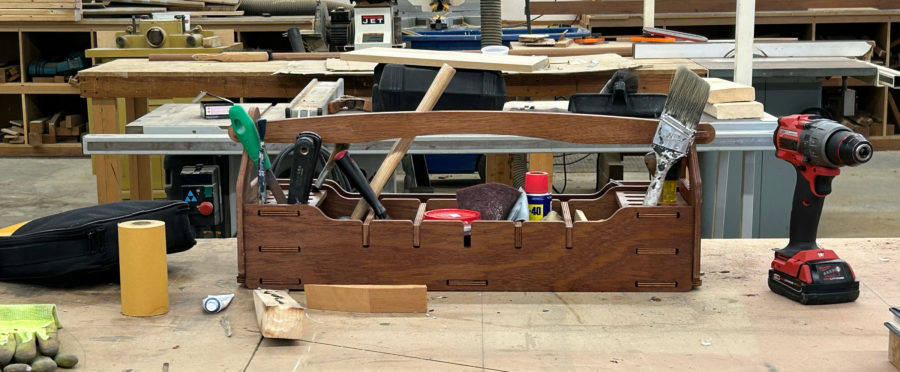
CLC Tool Box Kit
any years ago, I took an adult-education entry-to-woodworking course. The once-a-week evening classes were held at a local high school over 10 weeks. I made a mahogany hinged-lid box with...

Subscribe Today!
Become a subscriber today and you’ll recieve a new issue every month plus unlimited access to our full archive of backlogged issues.
Already a subscriber? Sign In
Subscribe For Full Access
Flipbooks are available to paid subscribers only. Subscribe now or log in for access.
July / August Issue No. 299 Preview Now
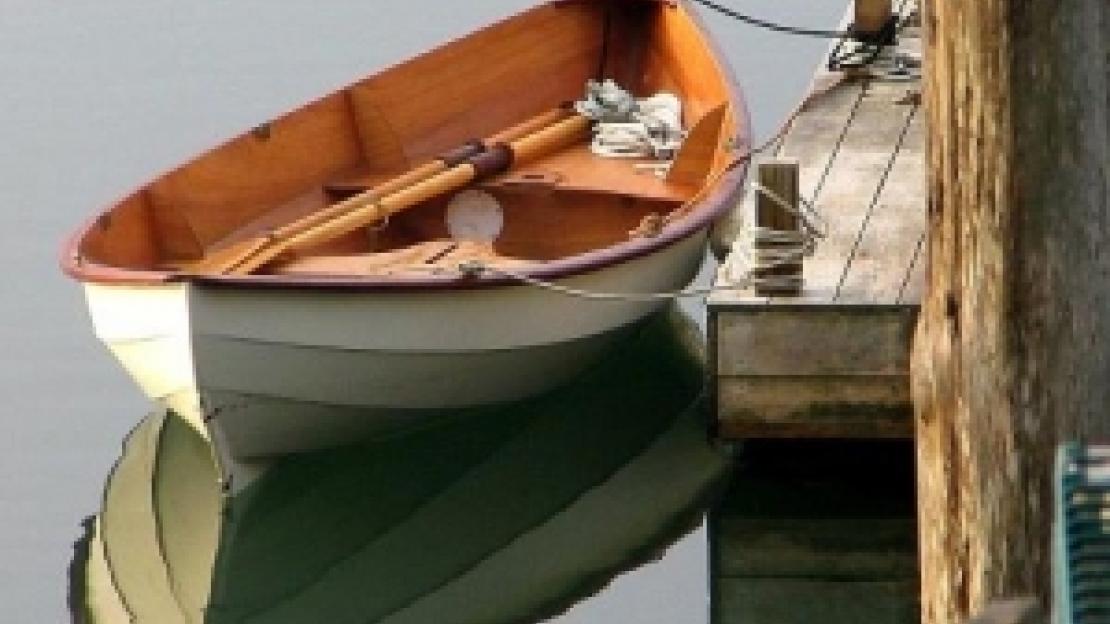
Sailboats - Daysailers
The Skerry design combines elements of traditional working craft of the British Isles and Scandinavia, with a little bit of American Swampscott Dory thrown in. The blend of historical antecedents yields excellent performance under sail or oar, along with good looks and ease of construction in plywood. This John C. Harris design fuses excellent rowing and sailing qualities into one attractive craft. Sail when there’s wind, row when there’s not. You’ll cover the miles either way.The flaring sides make the Skerry stable and dry under sail. The stock sprit rig was chosen because it’s easy to set up and handle, powerful for its size, and stows inside the hull for transport. Under oars, the Skerry has a long, easy glide and excellent tracking. Two rowing positions permit the Skerry to be rowed with one, two, or three adults on board.Ultralight weight—about a hundred pounds—also means the Skerry is easy to handle ashore.
Design Specifications
1805 George Avenue Annapolis Maryland 21401 Phone: 410-267-0137
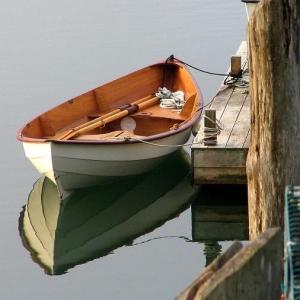
ACCESS TO EXPERIENCE
Subscribe today.
Publishing dynamic editorial content on boat design construction, and repair for more than 40 years.
1 YEAR SUBSCRIPTION (6 ISSUES)
Print $39.95, digital $28.00, print+digital $42.95, from plans & kits.
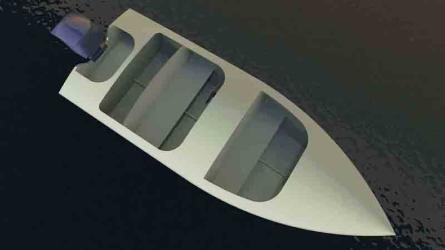
F1430 Fishing Kayak
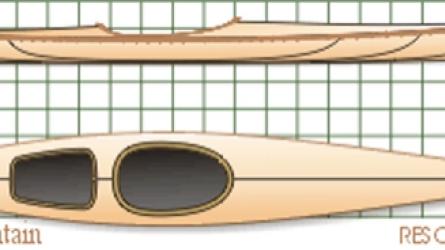
16' 6" Resolute
From the community.
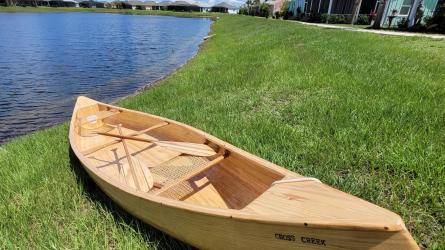
Handmade wooden canoe
Beautiful hand built wooden canoe. Design modeled on the Wabanaki Indian canoes of Maine.
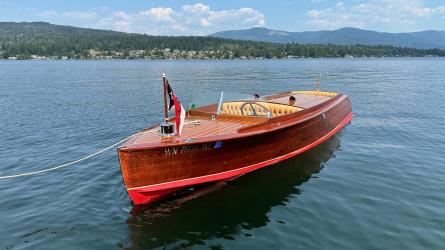
1929 Hacker Craft Runabout 18'
Jimmy Steele Peapod
Good Vintage Boat - Hull Number 66 - Completed In 1989.
Boats Plans and Kits
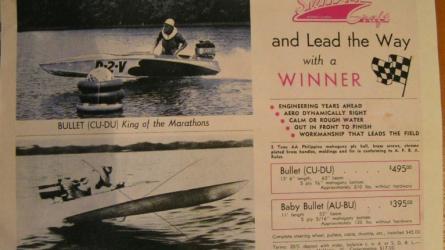
Switzer Bullet 136

- My Boat PAGES
- Teach Yourself to Sail
- Leathering Oars
- Sail Terminology
- Boatbuilding links
This is the story of how I built my Skerry Sailboat

What's new? I made a new Sprit sail for the Skerry. I had to Extend the sprit to fit the new sail.
Skerry boat.
It is built using the stitch and glue method of boatbuilding. Plywood pieces are cut out and stitched with wire. The seams are then glued with thickened epoxy to make a strong bond.
Since I'm not much of a sailor, and have never built a boat I'm talking from a position of great ignorance but that's never stopped me before.
Fortunately for me I had most of the tools I needed (surprisingly few for this project) and a goodly ability to wing it. Space is of course always a problem. I could built it in the basement but never get it out. The garage is a good size but Toronto in winter is cold so the epoxy simply would not cure. The back yard was under 3 feet of snow. Obviously that left the living room.
I ordered the plans and instructions. I also ordered plywood and epoxy but had to wait about 3 weeks. I don't suppose marine plywood is a big seller in January, in Toronto. Most people have built their Skerries from kits but I wanted the experience of a complete build so I ordered plans. Looking back this added a lot of time and there was not real financial advantage. I can say that I built it all though and I think this was important.
This is the picture of a Skerry boat. It is based on Scandinavian Faerings. It is a plywood adaptation. It is very pretty and can be sailed by one or 2 people. Since I will mostly be sailing by myself, being able to move it by myself is a requirement and at 100 pounds this is possible. It can also be rowed and tolerates reasonable waves. The square sail is easy for one person to handle and the boat is not tippy.

John Harris the Skerry Designer wrote this after the Skerry had been around for about 5 years Skerry Article
emails: Christine
This web site reflects my personal ideas and doesn't represent anyone else's point of view.

Make and Mend
Clc skerry 'luna' build 2022-23.
The Skerry was designed by John Harris of Chesapeake Light Craft. You can read the background story here on the CLC Skerry web page .
The Skerry is a 4.6m (15ft) rowing and sailing boat built using marine plywood, epoxy and woven glass fibre cloth. Designed for use in sheltered waters with a maximum payload of 200kg (450lbs). She has a reputation as being both good to row and sail, and at around 45kg (95lbs).
I chose to alter the internal layout of the Skerry after reading comments about her fore and aft balance. We shall see if those changes work for the way I expect to use her or not. After the alterations, additions (inhales etc), painting and varnishing, Luna’s hull weighs 55kg and I’m happy with that.
I have no doubt that many will say that I’ve spoilt the simple internal layout.

Post scope and acknowledgements
In this post I’ll limit the detail to the design and build of the alterations and additions I made rather than a step by step record of the build.
I joined the FaceBook “ CLC Skerry Owners, Builders, and Fans ” group which provided access to heaps of experience with the Skerry from all round the world. In addition to the CLC web site there was also Christine Marchant’s Skerry build pages, and Galen Piehl’s Inside Waters site. These pages and forums answered many of the questions I came up with and I thank all of those who offered responses, affirmations and alternative views. I really appreciate your support and wisdom.
My boatbuilding experience and motivation
I’ve been around boats all my life and maintained motorboats, yachts, trailer sailers and done a wide range of modifications and fitting out. The Skerry is my first complete build and it has been a great experience allowing me to put my years of engineering and woodworking experience to use. I rarely have much spare time as I’m often making or mending things for other people so this project was a bit of self indulgence.
One significant motivation was the need to sell my 115HP powered boat that I used for fishing. Reducing our use of fossil fuels was something my partner and I had resolved to do with her taking the lead by buying an all electric car (BEV) in 2015. Add to that the cost of fuel cost and the need to divest myself of the powerboat and my petrol car that I kept primarily to tow the boat with. Both are now sold and I now have an oar and sail powered boat and an ex-Singapore BYD E6 all electric taxi. After investing in 24 solar panels on the roof our boating, motoring and house fuel bills are approaching zero.
Why the Skerry?

I was looking for a boat that I could use both off the beach and in a shallow harbour. Being able to move the boat with ease was essential as was a good balance between rowing and sailing efficiency. I have four grandchildren so I wanted a boat that is unlikely to capsize providing she is sailed conservatively. A stable fishing platform to use off the beach would be a bonus.
Why the Skerry? – well look at her shape – she’s a stunner! The double ended style, super light weight, excellent rowing and sailing characteristics made the Skerry an easy choice for me. I did consider many other designs but I found many to lack the traditional styling I find attractive in a boat, even though they may have been an easier build. The light weight build means the Skerry can be handled easily by one person, will float in a few inches of water, has a good reserve of buoyancy, and looks good.
Buying a kit and having it shipped to New Zealand was cost prohibitive and besides, I have a well equiped workshop with a large format CNC router that could, with a bit of adaptation, handle a full sheet of plywood. So I decided to build her from scratch. After machining the kit of parts, transferring them from flat pieces of ply into this beautiful shape was a real pleasure. Cutting the kit myself also gave me the opportunity to make some modifications.
The reasons I made some alterations
It seems that no boat design every meets all the individual needs of its owner. John Harris, from CLC Boats, has a vast experience in the design of boats and I believe the current stock design of the Skerry is the second version and the design has spawned the Skerry Raid. I certainly don’t have the experience of John and his team but that didn’t stop me dipping my toes into the whirlpool of design customisation – what could go wrong? I like to think I have sound judgement (as all customisers probably do) so I decided to take the risk and give it a go. Worst case scenario I will end up with a pretty and expensive garden flower tub. Best case a boat I’ll enjoy two-fold and have lots of fun building and using.
1. Balance and aft seat relocation I read many accounts of the Skerry being a little too light at the bow when there’s a single occupant seated on the aft bench. Work-arounds quoted ranged from adding two full 20 litre water water containers close to the mast, to kneeling/sitting on the floor in front of the aft seat. Neither option appealed to me. After studying the plans and building a model I decided to move the aft seat forward to be equivalent to the moment generated by the water bottles. Keeping the math simple and ignoring gravity as it is the same for each moment, I needed to move the 80kg person (me) forward by about 0.35m to eliminate the need for the water bottles.

So that is what I did. If I had just made the rear seat larger it would have looked a mess so I decided to move the aft frame forward by 10cm, extend it to the gunnels and cover the void with a curved deck. This would increase the buoyancy in the event of a capsize. I created a small hatch to allow stowage of my beach trailer and or the mast end, but not big enough to tempt me to use it as a storage space. And then I added lightweight seating.
This is how it looks in the finished boat.

2. Dagger board position and rowing seat.
As a consequence of the daggerboard being mounted as part of the central thwart, moving between the bow and stern meant clambering over the seat and daggerboard. As both very young and old would be using the boat I wanted to make movement around the boat as easy as possible. Some research found a number of examples of an offset daggerboard including some boats designed by John Harris. In every account I read the sailors noticed very little difference in performance as a consequence of offsetting the daggerboard. Structurally the designed arrangement did add considerable stiffness to the hull so I decided to add another frame position and close in both sides to create two lockers. The top of the daggerboard case was raised by about 30mm to reduce the chance of water entering a swamped boat through the daggerboard casing.
These lockers will add to the buoyancy although, being low in the boat there is the chance they may increase the possibility that the hull will turn upside down after a capsize. As a capsize is more likely when sailing, I decided to compensate by using sealed, hollow spars which, hopefully, will result in Luna resting on her side. We shall see. The extra frames and lockers provided a good increase in stiffness to the hull (apparent during the build) which was then supplemented by the addition of inwales. The rowing seat between the lockers is removable and adjustable.
This is what the central portion of the boat looks like.

A bit of impromptu static load testing occurred during a visit of extended family. Luna was sitting on two saw horses. No flexing, cracks or unexpected noises detected!

3. Forward section
Not much of a change here. I did open the seat to create a sealed locker that I could put a battery in should I decide to add a bilge pump or fish finder. I have both of these from previous boats so adding these gadgets will just require adding a battery and switch panel. I added sealed conduit to route the wires should they be needed.
Under the breasthook I added a small anchor locker leaving a gap at the top of the door for both ventilation and so I can use the breasthook as a handle and lifting point. The anchor locker hatch can be locked shut to stop the anchor falling out in the event of a capsize. The locker self drains into the cockpit.
Although I allowed additional width when cutting the front seat I found it was not a good fit. Rather than cut a new one I used scraps of ply to create a shelf on both sides that the seat could rest on. As it turns out this has added a gutter between the seat and hull which has been designed to self drain.
The mast step had to be modified from square to round as I decided to buy a carbon fibre mast. The mast step, partner and forward frame have been strengthened above design specifications.

4, Rig, Spars and Oars – currently under construction
I chose to rig Luna with a balanced lug sail. After communicating with Galen Piehl , I contacted Mike Storer at Really Simple Sails . Mike designed a sail based on the one he made for Galen but with some minor changes to the reefing points presumably based on feedback received. The sail is 64.5 sq ft so a little bigger than the CLC version. Mike and his team gave an accurate forecast of the lead time and the sail arrived from the wherever it was made – the Philippines I think. Mike’s web site gives a huge amount of information on setting up and tuning lug sails. A great resource, thankyou Mike and the community of Storer boat enthusiasts.
A rowing friend of mine suggested I should see if I could track down some sculling oars rather than opt for conventional oars. After introductions to the local rowing club I was able to source six oars that had been retired from racing. I chose two of these for rowing and used three of the remaining oars to make the boom and yard. The oars are tapered and have an eccentric profile so they are light in weight but will need to be mounted so the strongest part of the profile is aligned with the forces on the sail.
Having gone down the carbon fibre route for the mast it seemed sensible to use a carbon fibre mast. I did research timber options but finding a local source of a suitable timber proved too difficult so I purchased a custom carbon fibre mast that was made to order in less than a week by Killwell FibreLabs in Rotorua. The mast is 4.66m long and 50mm diameter.
I have created Paulownia plugs for the ends of the mast and spars because it is so light (and I happened to have a piece in the workshop).
More on this when I have finished rigging the boat and tested her out.
5. Seats, daggerboard and rudder.
Although I was advised that the Skerry didn’t have the beam for side seats, after some experimentation I decided to fit them anyway. The side seats are made of 9mm ply which have been strengthened by gluing the waste material from the slots to the underside of the slats. The seats are supported at the ends by battens on the frames and lightweight plywood frames in between.
I added theses to give me more options when I take the grand children out into the harbour. There is also room for our dogs should they want to be on the water rather than in the water. Being clear on the underside there is plenty of room for feet and legs and for rowing there is no need for foot rests as there are plenty of options for hooking the feet under the seats. The rowing seat is a simple bit of 9mm ply that is removable and adjustable fore and aft.

Work in progress
As of the 19 June 2023, I have taken Luna out for a couple of sea trials under oar. Although it is winter her in New Zealand, the weather was perfect for launching from the beach. Almost no waves, no wind and bright blue skies. My custom rowlocks worked fine and now probably need to be tidied up from their prototype state. The first priority will be completing the spars and rigging her so I can take her for a test sail in the harbour. I’ll update this page when I have more to report.
Discussion and comments
Please use my post on the Facebook CLC Skerry Owners page for any public comments – Post on FB CLC Skerry owners page – 22 Jun 2023
You can also send me a message via my contact page .
Add Your Heading Text Here

IMAGES
COMMENTS
The Skerry is a docile and fun boat no matter which rig she carries; the 78 square feet of the sloop rig will elevate her into racing-dinghy-level performance, though with the performance comes the racing dinghy's rigging complexity. Under oars, the Skerry has a long, easy glide and excellent tracking. Two rowing positions permit the Skerry to ...
The Skerry is a docile and fun boat no matter which rig she carries; the 78 square feet of the sloop rig will elevate her into racing-dinghy-level performance, though with the performance comes the racing dinghy's rigging complexity. Under oars, the Skerry has a long, easy glide and excellent tracking. Two rowing positions permit the Skerry to ...
Helm balance was mostly neutral and the boat was plenty responsive. We fought with the daggerboard some, as it wanted to float up in the trunk during tacks or in lulls, but that's a problem easily resolved with a bit of bungee cord. SKERRY. LOA: 15'. BEAM: 54". DRAFT: 5"/30". SAIL AREA: 56 sq ft.
The Skerry is a great boat but the Skerry's daggerboard might be improved with the LHT's centerboard. Having built a Jimmy Steel peapod at WoodenBoat School, I'm partial to the Tender's peapod heritage. A Tender vs a Skerry with the Tender's sail might cause a good deal of back-and-forth consideration, but either would be a great choice.
The Skerry is a plywood-epoxy composite boat, assembled using Chesapeake Light Craft's exclusive LapStitch technique. The sides are 6mm Okoume, while the bottom is 9mm, sheathed with fiberglass for those hard beach landings. The interior includes 9mm okoume frames and sealed air tanks at the bow and stern for buoyancy. The matrix of high ...
This time it was Chesapeake Light Craft's Skerry, a 15′ double-ender for oar and sail. "I argued that building a boat was an important mental health measure.". To up the ante even further he put the Skerry kit on his pointedly specific Christmas and December birthday wish lists. He also placed the order.
4.5'. 2'. Tennessee. $4,500. Description: Chesapeake Light Craft (CLC) Skerry, Sailing / Rowing Craft. Easy to build, easy to row, and easy to sail: the Skerryis a terrific rowing and sailing boat with timeless good looks. . The Skerry design combines elements of traditional working craft of the British Isles and Scandinavia, with a little bit ...
Gary introduces his CLC Skerry. A great little boat for rowing and sailing. Checkout Gary's channel here: https://www.youtube.com/channel/UCnXskZr4XTREstNrmi...
California. $6,300. Description: I have a newly built Chesapeake Light Craft 15' "Skerry" rowing/sailing boat for sale. I built this boat in 2017/2018 for myself and now I am building another boat of a different design. This boat was built of Marine Plywood and epoxy. The boat has been in the water once so I could make sure the sail and rigging ...
This John C. Harris design fuses excellent rowing and sailing qualities into one attractive craft. Sail when there's wind, row when there's not. You'll cover the miles either way.The flaring sides make the Skerry stable and dry under sail. The stock sprit rig was chosen because it's easy to set up and handle, powerful for its size, and ...
Equipment: The Lug Rig of the Chesapeake Light Skerry. The balanced lug rig is the best compromise between easy construction, performance under sail, and ease of rigging. Of the three rigs it is the easiest rig to set up and douse while on the water, and the easiest to reef if the wind comes up. Location: Buford, Georgia. L104179. (770) 831-0403.
SKERRY BOAT. Here is the story of the building of MY Skerry boat "Cricket". It's a 15 feet sailing dinghy called a SKERRY. It it is rigged with a squarish sail called a sprit sail. It can also be easily rowed. It is built using the stitch and glue method of boatbuilding. Plywood pieces are cut out and stitched with wire.
The Skerry was designed by John Harris of Chesapeake Light Craft. You can read the background story here on the CLC Skerry web page. The Skerry is a 4.6m (15ft) rowing and sailing boat built using marine plywood, epoxy and woven glass fibre cloth. Designed for use in sheltered waters with a maximum payload of 200kg (450lbs).
This is the current release of the Skerry's spiral-bound assembly manual. 147 pages with extensive illustrations. NOTE: CLC instruction manuals walk you through construction step by step with photos and drawings, and are a good way to get acquainted with the process in advance of a kit purchase. (Manual purchase refundable with kit purchase.)
Skerry cruisers (or Square metre yachts) are yachts, usually wooden, which are constructed according to the Square metre rule.Originating from Sweden, they were historically most popular in the Baltic Sea, though some classes also saw popularity in other European countries and the United States.Skerry cruisers are construction classes, meaning that though the boats are not identical with each ...
Skerry Raid Full-sized Plans view contents. $139. The "Skerry Raid," also known as the Expedition Skerry, was created for author and photographer John Guider, who used it for an epic 6000-mile+ Great Loop voyage in the boat. Guider completed his adventure in August 2015, and his Facebook page makes entertaining reading for anyone fascinated by ...
Vermont. $3,500. Description: A newly built this spring Chesapeake Light Craft Skerry sailing and rowing boat. Boat is 100% ready to sail with all components in like new condition (cause they are new :) ). A superb rowing and sailing boat that I've covered almost 60 miles in. I cannot sing enough praise for this boat, there is a reason it's so ...
Christine shares her experiences sailing a CLC Skerry Cricket on Lake Ontario, a choppy and windy location. She describes the pros and cons of the sprit sail, the jib, the weight and the stability of the boat, and some exciting adventures on the water.
DailyBoats.com lists Skerry for sale , with prices ranging from $117,674 for the more basic models to $117,674 for the most expensive. These yachts come in various sizes, ranging from 38.06 ft to 38.06 ft, with the oldest yacht built in 1931. This page features Skerry boats located in Italy. To buy Skerry near you, use the search filter provided.
The Skerry kit includes computer-cut parts in 6mm and 9mm okoume marine plywood, spanish cedar rubrails, sapele breast hooks, the daggerboard trunk assembly, epoxy kit, fiberglass for hull, and one pair of bronze oarlocks and sockets. . The kit also includes the 140-page spiral-bound assembly manual with hundreds of step-by-step photos and ...
4'. 2'. Pennsylvania. $1,999. Description: This epoxy-over-wood CLC Skerry is handbuilt from a Chespeake Light Craft kit. Sail or Row, Double row stations, garage stored all its life. Removable mast and boom , tiller and rudder for rowing use. 70# hull weight. Sailed only in freshwater western PA lakes, never left in H 2 0 overnight. capacity 3 ...
If you want to build a boat, we have what you need. Chesapeake Light Craft is your source for boat kits, kayak kits, boat plans, and boatbuilding materials. Our original, award-winning boat designs include kayaks, canoes, rowing boats, dinghies, and sailboats. More than 40,000 CLC boats have been built from kits and plans. Our designs are built ...
Skerry Cruiser preowned sailboats for sale by owner. Skerry Cruiser used sailboats for sale by owner. Home. Register & Post. View All Sailboats. Search. Avoid Fraud. ... 19' Flying Scot Flying Scot 19 Sailboat Lake Fairview Marina Orlando, Florida Asking $29,495. 22' Catalina Yachts Capri 22 Central Florida, Florida Asking $ 28' Cape Dory CD 28